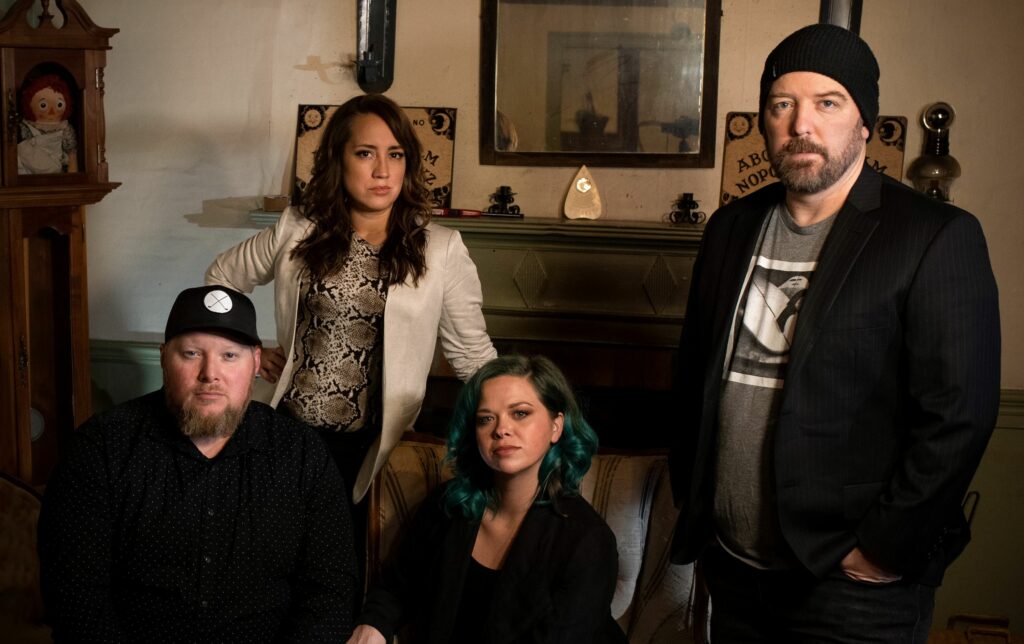The Sleepless Unrest: The Real Conjuring Home leads four filmmakers and paranormal investigators (Vera and Kendall Whelpton, Richel Stratton, and Brian Murray) to the reportedly haunted house that inspired the highly-successful horror franchise debut, The Conjuring.
This forensic documentary sees the team use ‘traditional’ ghost hunting techniques to determine whether, as the stories say, this house truly is haunted. The current homeowners, Cory and Jennifer Heinzen, are also heavily featured as they join the group in their investigation and offer their personal insights into supposed supernatural happenings.

The story of their overnight stay is variously organised by time stamp, methodology, and specific locations within the house. Throughout, the investigators test different types of paranormal detection methods, from classic technologies like EMF readers and devices that go off when touched, to more traditional practices like holding seances.
There are some face-to-face interviews and plentiful usage of night vision camera footage, which create the sense of being both included as part of the team, and positioned as a critical observer responsible for judging evidence as it’s offered up. The examinations of such evidence are scrupulous: close-ups, slow-motion replays, and attempts to recreate results all invite the audience to observe and form their own opinions on the validity of such proofs. These lingering scenes also work well to build tension, so even the most hardened sceptics will find something to enjoy with The Sleepless Unrest.
The score is of particular importance to this investigative documentary. Strange sounds or ambient noise that the team are seen reacting to can be quiet and barely picked up by the recording equipment, so the film relies on the score to build tension and dramatics. When something is heard in the distance or there’s a moment of shock or fear, string instruments surge sharply, playing up the expected horror musical elements.

It is difficult to say whether The Sleepless Unrest should be considered a documentary or a genre film. Whilst involving real people and bearing the style of a documentary, there are aspects of the movie that lean more towards fiction filmmaking tropes. For example, the final scenes have the investigators detailing strange events that followed them home – frames that are very reminiscent of false endings in genre films. This, coupled with the musical score, deftly tread the fine line between the two styles of cinema.
The Sleepless Unrest is an interesting look at an old story. Of course, this is intended for a very particular audience, and it wouldn’t necessarily offer a universally enjoyable experience – nor should it be judged by those parameters. However, the film does very well to build suspense and to offer an educational deep dive into the mystery of the Conjuring house – The Sleepless Unrest is mandatory viewing for diehard horror fans and supernatural aficionados.
The Sleepless Unrest: The Real Conjuring Home releases in select US cinemas and on digital July 16th.
